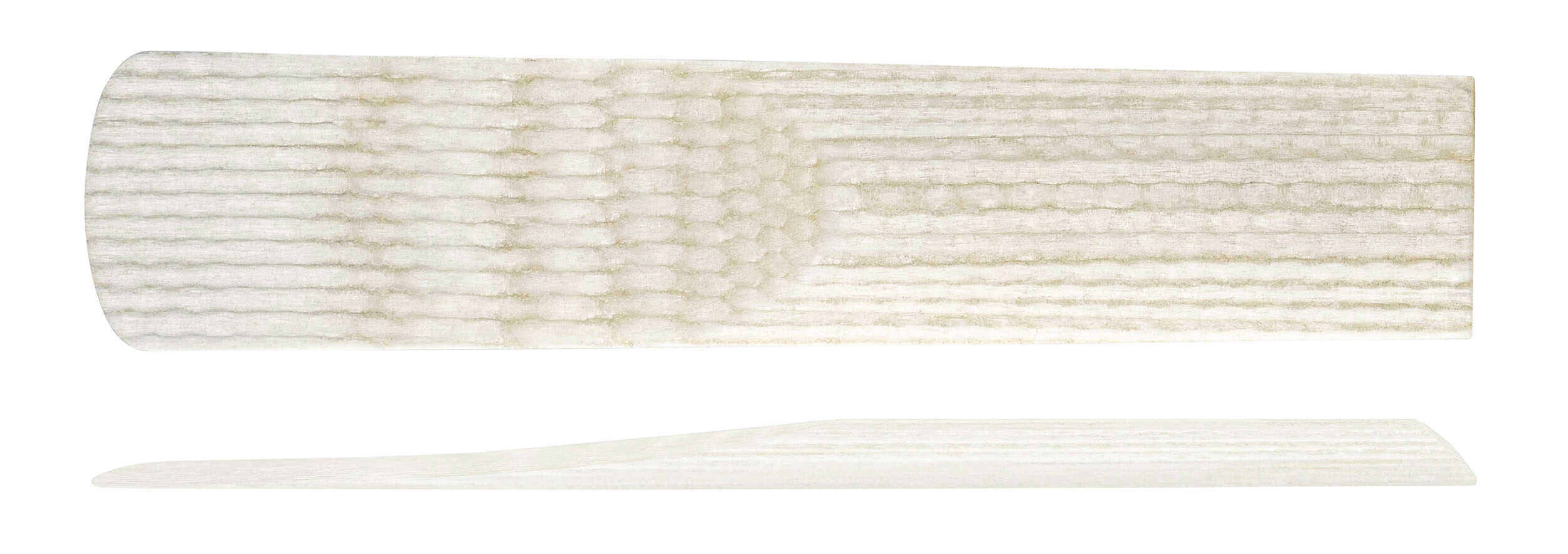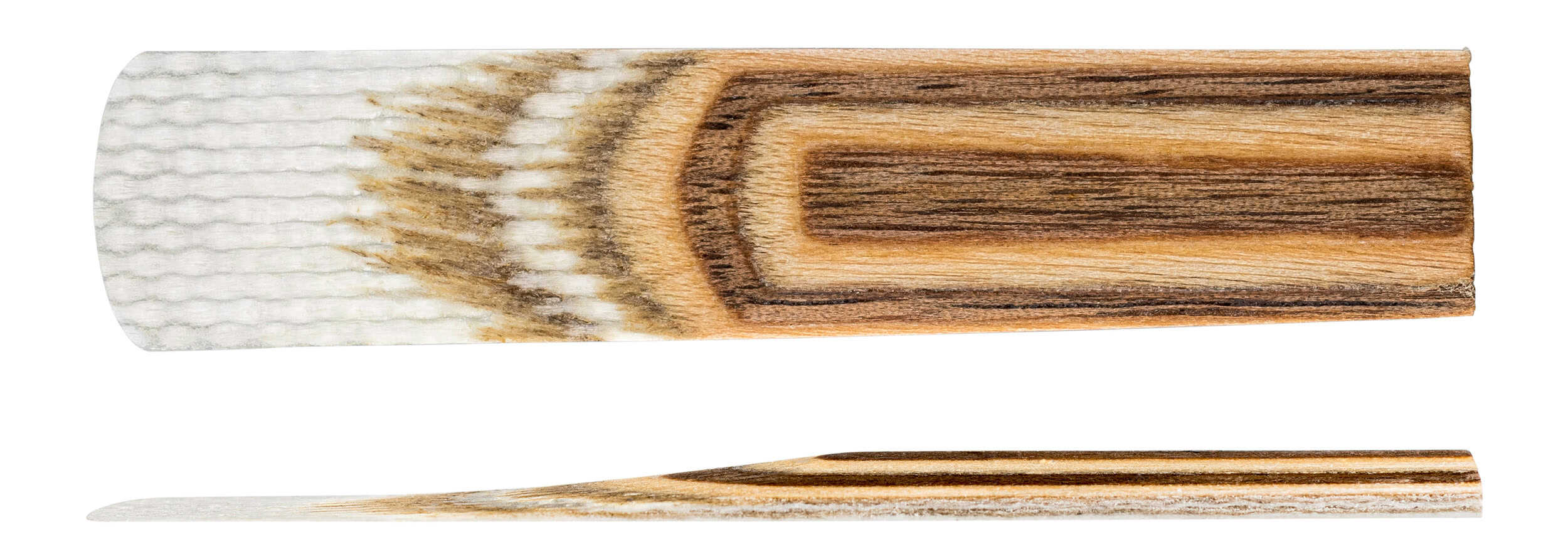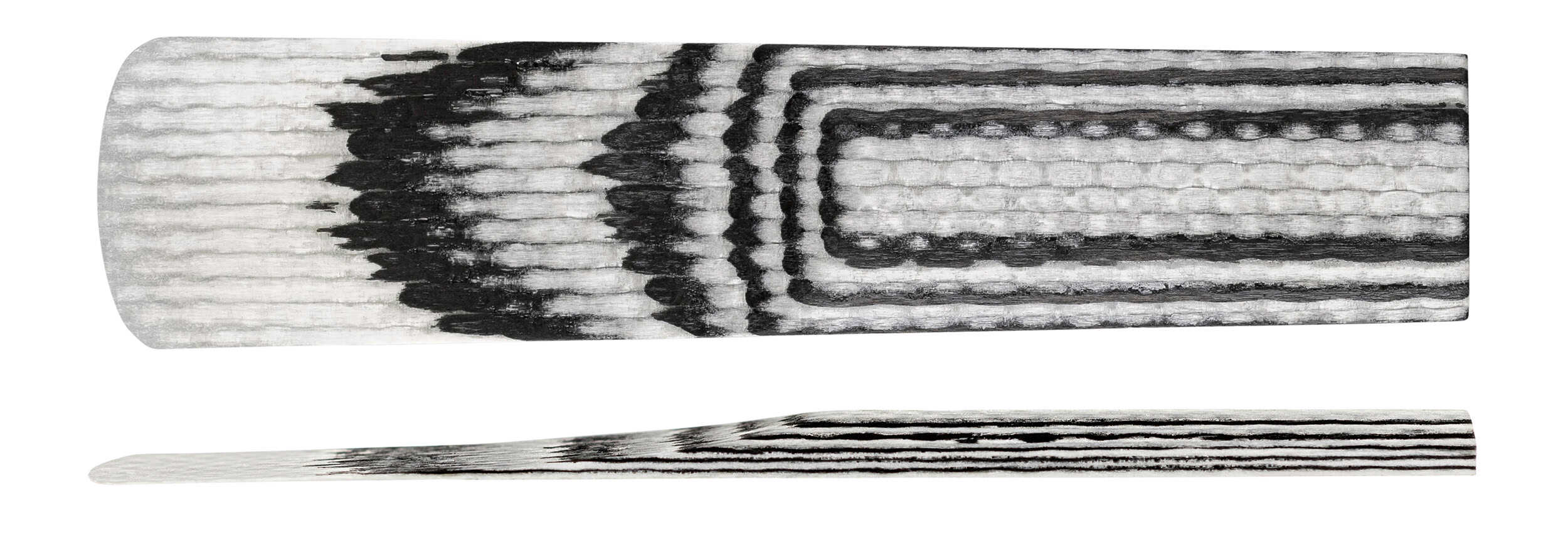Carbon and Carbon Classic Fiberreed
Our bestseller is the carbon Fiberreed, the black and white coated reed. The white plies are the hallmark of the synthetic hollow fibers that have been used in the manufacture of fiber reeds from the very beginning. They give the reed a beautiful, reed-like buzz. On the carbon model, the white hollow fibers are coated with carbon fibers that give the sound a distinct, bright edge, which is especially nice when you need volume and clarity to play with amplified instruments.
If you play low and soft, they still give a rich, full sub-tone. Compared to the Natural Fiberreed , the Carbon Fiberreed sounds somewhat richer in overtones and has a slightly wider sound spectrum. The lows are rich, the highs powerful. At the same time, it has a convincing presence.
The carbon Fiberreed sounds brighter and more radiant, the Classic model darker and softer. The normal carbon blows easily and freely while the Classic cut produces more resistance and a slightly fuller tone because it has more heart before the reed becomes thinner towards the tip.


Natural and Natural Classic Fiberreed
The Natural models are the original fiber reeds consisting only of the white hollow fiber material, which is modeled after the natural cane wood Arundo Donax. The white material produces a pure tone that allows the desired sound to be produced using a variety of techniques that can be used to alter the tonal characteristics, including the widest range of overtone and altissimo playing. In the middle and low registers they produce a satisfying, full-bodied sound. The Natural Classic Fiberreed has a steeper cut and therefore sounds slightly darker and softer than the Natural Fiberreed. It is particularly suitable for a vintage sound in jazz or for classical mouthpieces such as the Selmer C* in the classical range.

Hemp Fiberreed
The hemp Fiberreed is cut round like a reed, in contrast to the straight cut of the carbon and natural models. As it consists of over 80% organic material (hemp and wood), it produces a darker, earthy sound with a broad spectrum of overtones. They still play clearly and precisely in the trebles and altissimo

Onyx and copper
The Carbon Onyx and Copper Carbon Classic fiber reeds are made of epoxy interspersed with carbon and copper fibers. The Carbon Onyx are free-blowing and sound bright and clear, while the Copper Carbon Classics have more resistance and develop a slightly darker, rounder tone. The high register and altissimo are solid on both models. Ease of playing and demand are very similar to the hollow fiber reeds but with less buzz.


Artist Series - G-Sax and RPL
The Artist Series models were developed in collaboration with two of our most renowned musicians. Both artists chose the material of alternating layers of carbon and hollow fibers and preferred the traditional curved cut for the heart.
The RPL model was developed in collaboration with the Portuguese music professor Rodrigo Pires De Lima with classical music in mind. The reed has a good resistance, a pure tone and a precise response.
The G-SAX model was designed together with Roland Graf aka G-SAX and is particularly suitable for jazz and pop.
